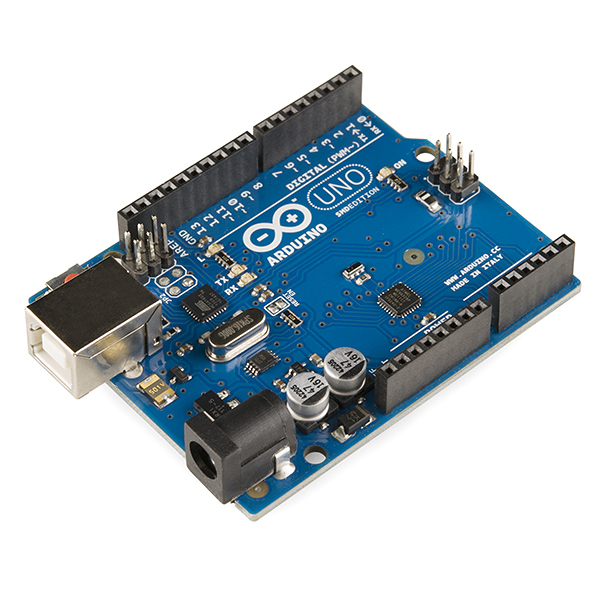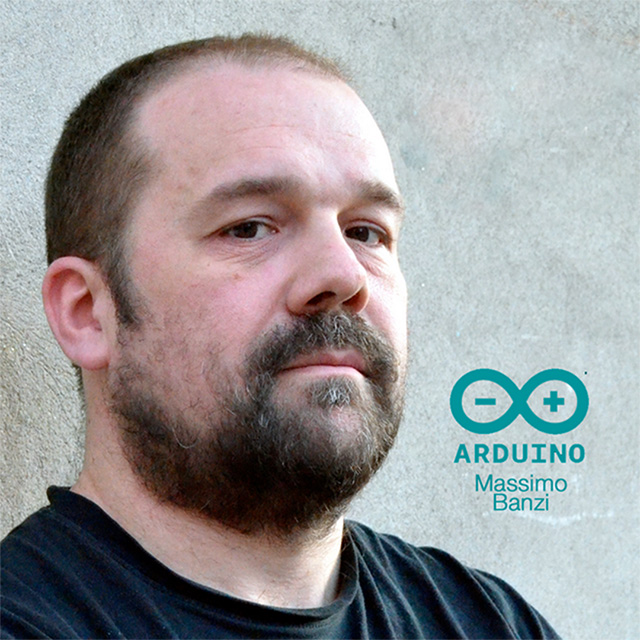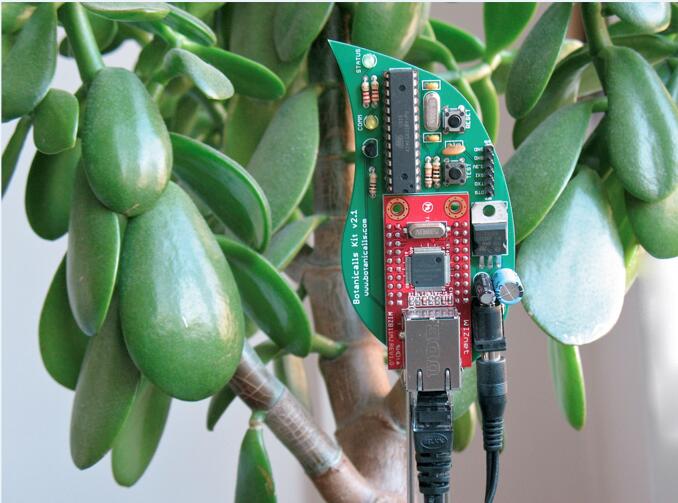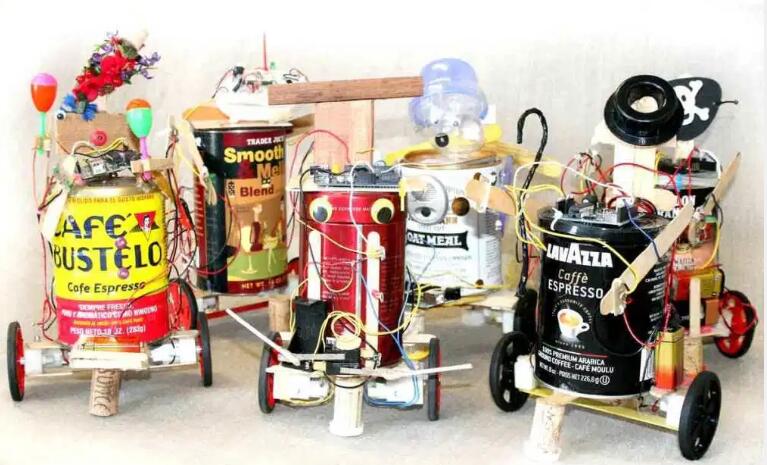In addition to having a strong hands-on ability and a passionate heart, Maker also has a must-have skill – “Arduino Board”. From grotesque hardware gadgets to tens of millions of dollars in commercial products Pebble smartwatches and Makerbot 3D printers start with such an inconspicuous Arduino board.

"Fifty years ago, people who wrote the software needed to wear a white apron to know everything about semiconductors. Now? Even my mother can program." Massimo Banzi, one of the founders of Arduino said, “We let a lot of people be able to make their own products.” Before that, you need to understand the circuit board assembly, electronic engineering foundation, and although Arduino still needs programming, the difficulty is reduced to amateur software development enthusiasts who can accept level.

In the tenth year of its birth, the $30 Arduino single-crystal board has now become the hallmark of maker sports and open-source hardware: more than 1 million units have been sold worldwide, and hundreds of clones or modified version have not been counted. The Arduino company that made this board born is also very strange. Rarely use marketing methods, and does not restrict others from cloning and transforming their own board products. As a result, Arduino is divided into two in the later stage, and even in different parts of the world, it is necessary to change the name to enter the market.
How did Arduino first fire?
“We just did community, not marketing.” This is a remark that the founder Massimo has repeatedly emphasized when Arduino succeeded in his early years.
Massimo began teaching at the Ivrea Interactive Design Institute in Italy in 2003. At the time, students at the School of Design did some computer-controlled art expression projects. However, Massimo soon found that the enthusiasm of the students was not high, and most of the students were only limited to some simple interaction effects.
"They used the BASIC Stamp controller, which was about $100. It's too expensive for students, and there are certain requirements for professionalism, so they will try to use as little as possible." Massimo Recalling. This is also the original intention of the Arduino controller, allowing students to design students to do projects at a lower cost.
In 2004, Massimo found three other people to start the project together: David Cuartielles, a Spanish semiconductor engineer who made an academic visit at Ivrea Interactive Design, Massimo's students David Mellis and Nicholas Zambetti. Arduino is also named after the name of the bar where they often gather.

“The students in these two schools don’t know technology, they don’t want to be technical experts, they just want to be designers and artists. They know that microcontrollers are useful, they want to learn, but they don’t want to read the entire engineering course. So we developed Arduino," recalls Tom Igoe, one of the founding members.
And because there is no need for a programming foundation and low prices, Arduino is quickly welcomed by students. Massimo also began to consider the Arduino as a product that can be sold worldwide, so he brought in Tom Igoe, a lecturer at the New York University Interactive Communications Institute (ITP) who has been in contact with Massimo for many years, and Gianluca Martino who was good at production worked together at the time, in 2005.
“We didn’t have the money to do marketing in the early days, just doing some small offline activities,” Massimo recalls. In 2005, after Arduino began mass production, Massimo sent an email to friends in London and friends of friends. “We would like to ask if anyone is willing to spend $100 to participate in a board activity that everyone does not understand. , Massimo said with a smile.
“There are real people who are willing to come. For the first time, we attracted 25 people.” At the scene, Massimo showed audiences the board of Arduino and the project that can be made with this board. “It’s been 10 years now, and there are still more than a dozen of these 25 people still active in our community,” Massimo said.
“The board is not something worth showing off, but the interesting project is the designer, regardless of the technology itself, just wants to use technology to implement their project. So, in the early days, we let the surrounding designers, artists, and friends use our board, then make the work and put the work on the web."
In 2006, Tom Ego, one of the founding members of Arduino, copied this same approach, bringing the board to New York University for students to use, and then encouraging them to put the work on the website. In the same year, Tom Ego wrote an email to the Dake Dougherty, the founder of Make magazine, Make. Not long after "Make" magazine first reported Arduino, Arduino became the new standard for the maker circle.
“People often say ‘I have to learn how to program a microcontroller' before, this is the ultimate goal. Now we are talking about 'I want to learn microcontroller programming, then go to be a robot.'” Igo believes the lowering of the learning threshold has also directly changed people's attitude towards hardware.
Lower the threshold for hardware manufacturing
Botanicalls began in 2007. At the time, Robo Flaude, who worked at the Computer Laboratory at New York University, and his small team of five people wanted to draw attention to plants and nature, so they thought of a project that made plants anthropomorphic.

However, they have development tasks on a daily basis, and it was not certain how much time they would spend on Botanicalls.
"We have a lot of ideas, but not every idea can put a lot of effort into development, especially when we don't know if people are interested. But because of Arduino, the earliest version of Botanicalls only took us two or three days. When we published this idea, we found that people were very interested in it. So we changed this idea into a formal product.” Rob told Curious Daily, so far, you can still buy the suit of Botanicalls on the hardware platform SparkFun.
Because the product concept is very interesting, Botanicalls has also appeared in the New York Times twice. Robb himself, after the project fired, joined DigiInternational, a company that also serves open-source hardware. Rob told Curious Daily that although they have their own expertise, the biggest significance of Arduino is that they can quickly test the market reaction. “For us, it’s quick to know how people think about this product, which means we have to follow it up, Arduino gives us this opportunity.”
For those who don't have a programming foundation, Arduino allows them to enter the field of hardware manufacturing without much effort.
“Arduino has changed my life.” Another creator, Judy Castro, told us, “Before that, I was a very traditional sculptor.”
But because of Arduino, she has now become a well-known entrepreneur in the field of education. Judy's project is called Coffeebots, which uses a waste coffee can and a single crystal circuit board Arduino to become a small robot that can move freely. She wants to use this project to do children's robot education so that children can also have the confidence to touch technology at the lowest cost. "I did this without any programming foundation," Judy said, so she is confident that the children will do it.

Because of Arduino, Judy has been getting busy in the past three years. As the coffee robot was selected as the best project by the American magazine Make, Judy walked from San Francisco to Shenzhen with a coffee pot robot to participate in the Maker Faire, running schools and educational institutions, giving speeches...As for the next project, she said that she intends to use the Arduino to drive a crocodile robot with a motor.
"Fifty years ago, people who wrote the software needed to wear a white apron to know everything about semiconductors. Now even my mother can program." Massimo said, "We let many people do it themselves." The product is out."
Open source and copyable, making Arduino an industry
"Fifty years ago, people who wrote the software needed to wear a white apron to know everything about semiconductors. Now even my mother can program." Massimo said, "We let many people do their product themselves."
At the beginning of the Arduino project, Massimo and his team made a special decision: to publish Arduino's board design and hardware design information on the website and adopted the agreement of Creative Commons, a non-profit organization. This also means that Arduino's boards have changed from a proprietary company's product to a cloneable, redesignable "open source" hardware project. Those who modify Arduino do not need to pay the license fee to Arduino, nor do they need to know the Arduino team.
"Open source" is also the reason why Arduino spreads so quickly and extensively. According to data released by the Arduino team, they have sold more than 1 million Arduino boards, and the boards that have been modified according to Arduino have 317 models, from robots to home controllers. Arduino-related boards and extended industries, such as the transformation of Arduino boards, to help makers from Arduino prototypes to mass production, are also emerging in the open-source hardware boom.
SparkFun, a chip retail component vendor, is the beneficiary of the rise of Arduino. This vertical e-commerce provider of assembly kits for DIY enthusiasts is often paired with review materials and instructions, and all packages are open source.
After Arduino was red, SparkFun also launched an IOIO microcontroller designed specifically for Android, allowing developers to easily control their work through the Android phone tablet. In 2014, the total number of board products on SparkFun has exceeded 3,000, and annual revenue has reached $32 million, which is three times that of five years ago.
Since PCBWay has become Arduino.cc official distributor and you can get certified arduino products in our gift shop. HERE.
 DIY Electronics
DIY Electronics
 Arduino
Arduino
 Hardware
Hardware
 Audio
Audio
 Computers & USB
Computers & USB
 Breakout Board Projects
Breakout Board Projects
 Home Automation
Home Automation
 LED Displays & Matrices
LED Displays & Matrices
 IoT
IoT
 Robotics
Robotics







